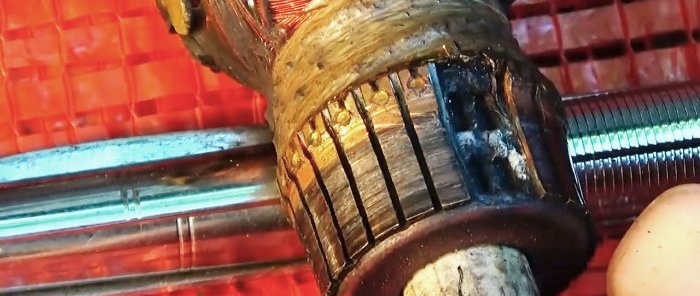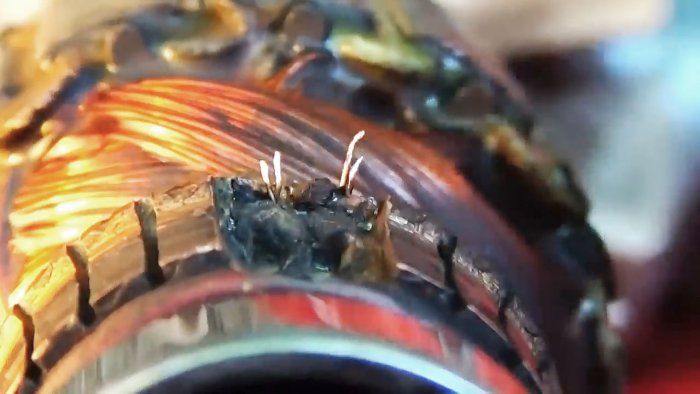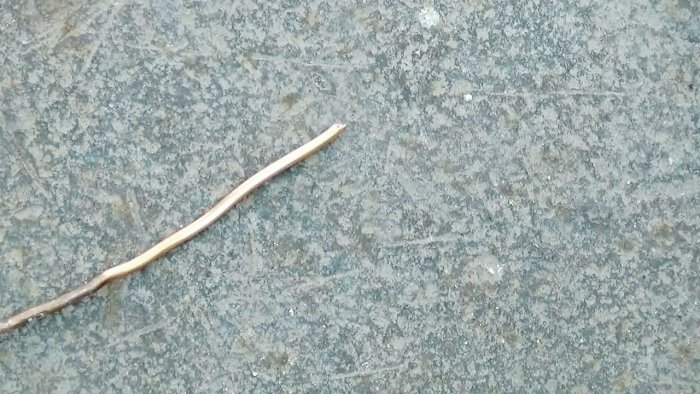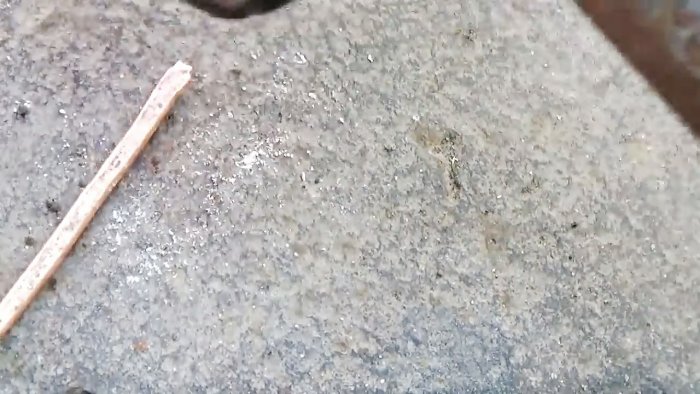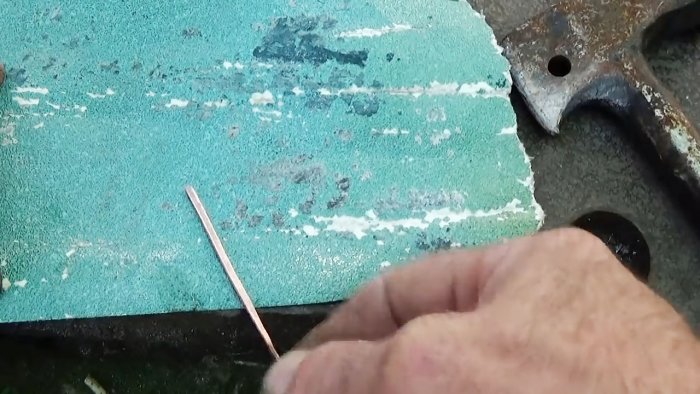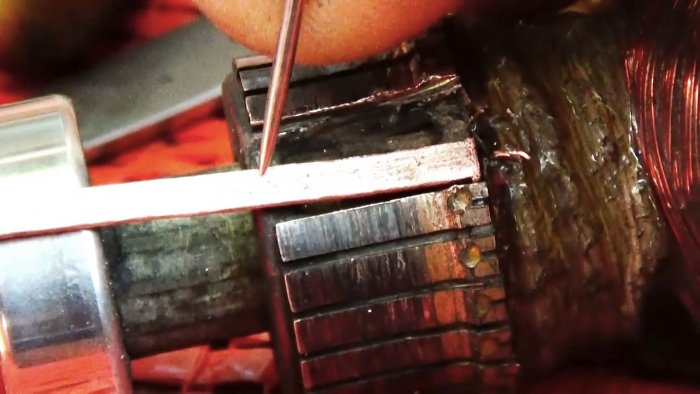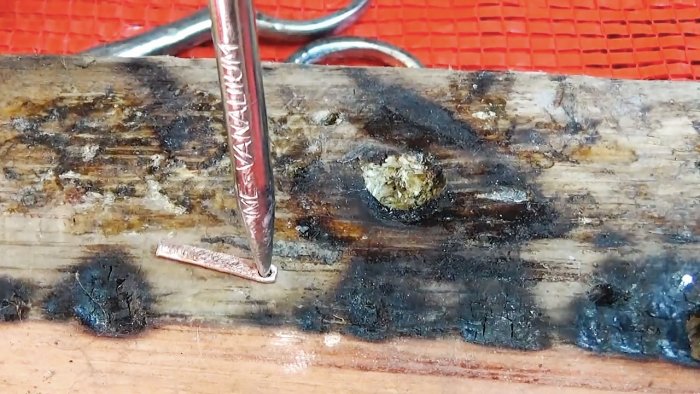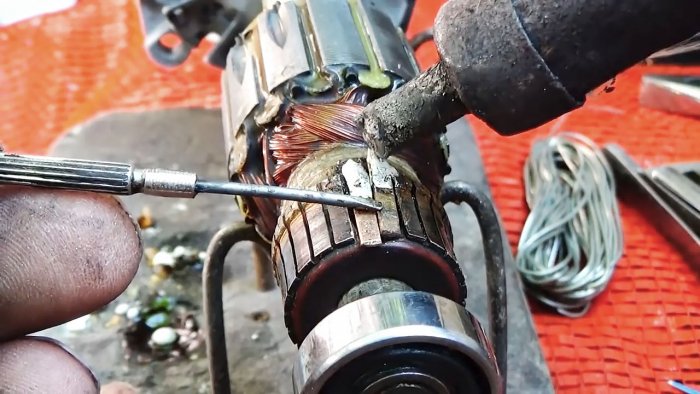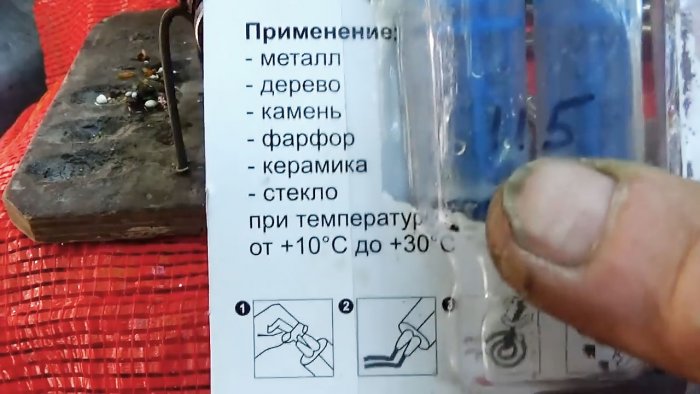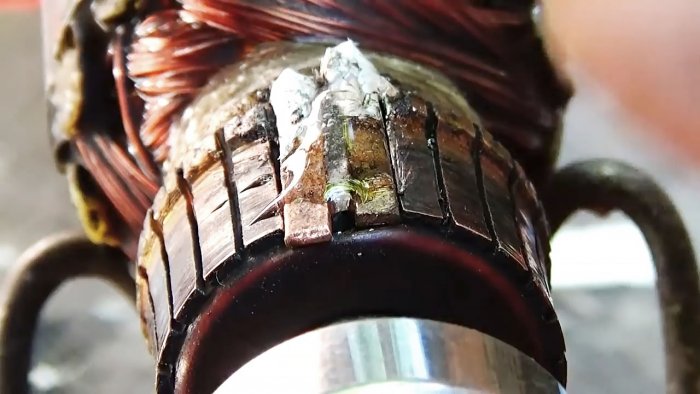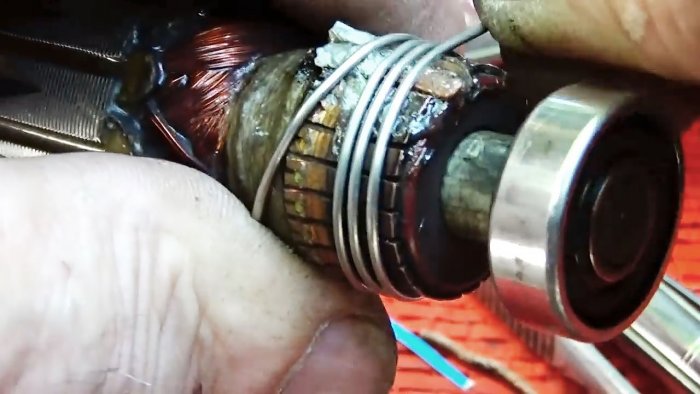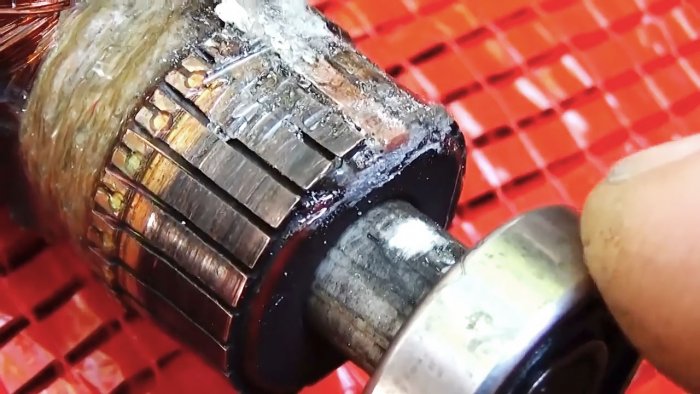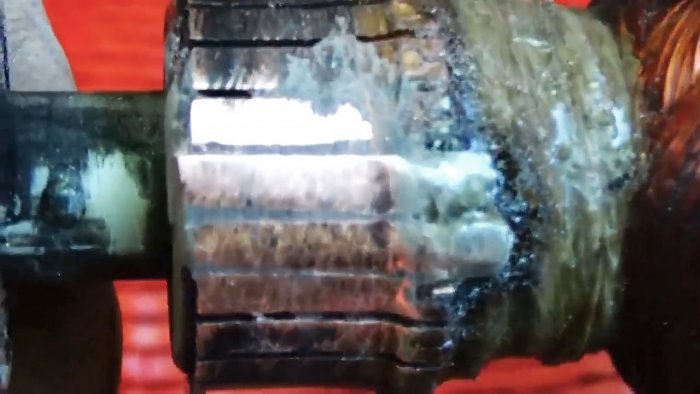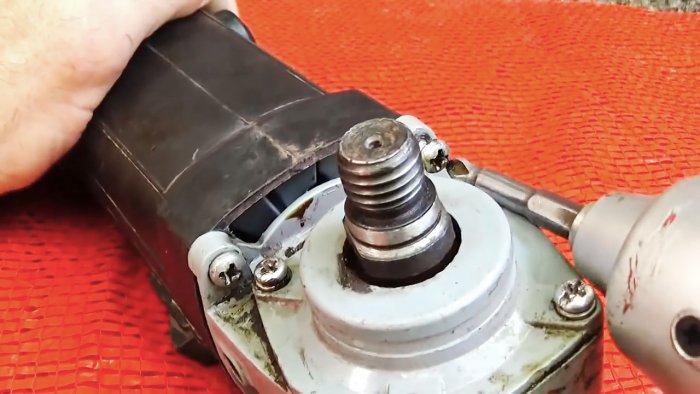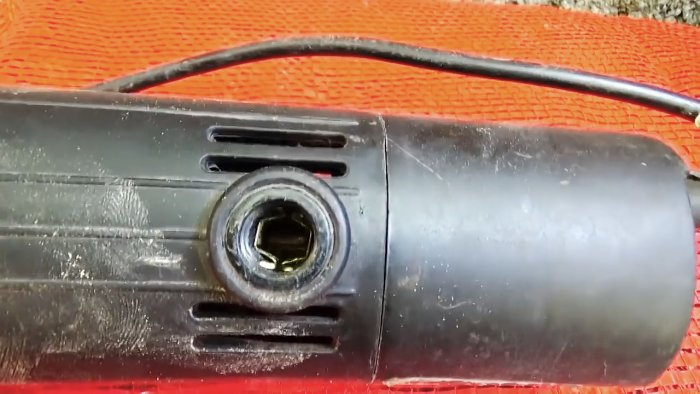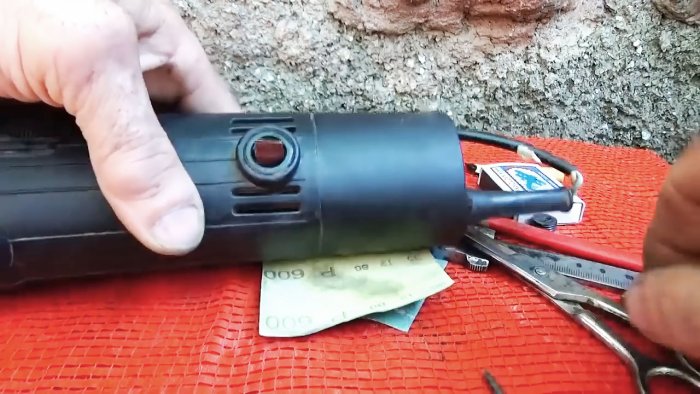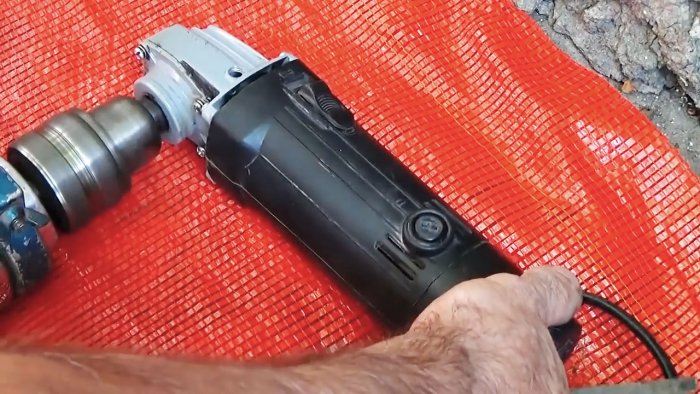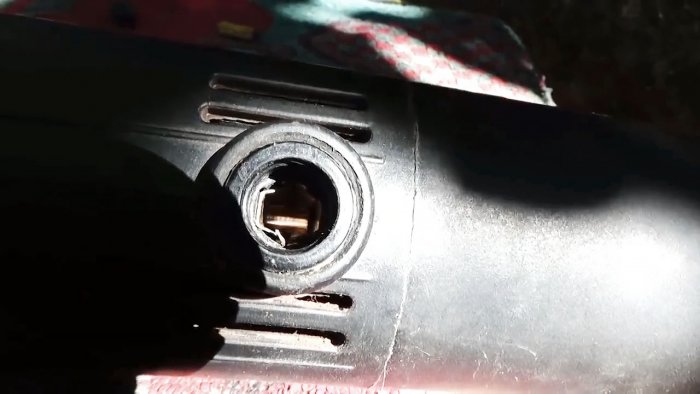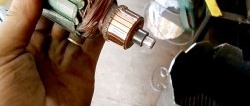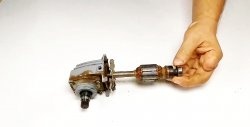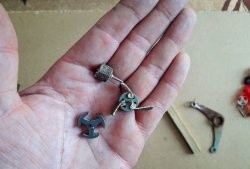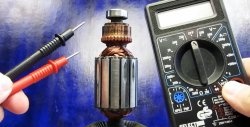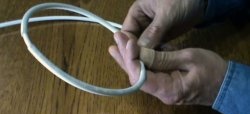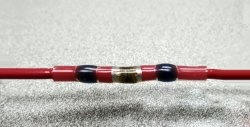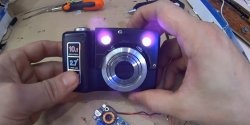If the drive stops working, then if the winding is working properly, the reason may be in the plates. One or two of them may simply tear off. However, this is not a reason to buy a new expensive engine. You can restore contact plates from scrap materials and literally “on your knees”.
Will need
To put the anchor in order in case of such a breakdown, we should prepare the following materials:
- a piece of copper wire;
- universal epoxy glue brand EDP;
- aluminum wire;
- wooden block.
Without a lathe, we will need many tools and accessories: a knife and a brush, pliers and a screwdriver, a hammer and an anvil, a file, sandpaper and a needle, a drill and a soldering iron, a vice and a punch, a caliper and a pencil.
The procedure for restoring armature collector plates
First, we put the bases of the flying plates in order. To do this, use a brush to remove small particles and dust from the recess in the collector. Then, using a knife, we align the places for the new plates in length, width and depth. At the same time, try not to damage the ends of the windings that go to the missing plates.
We cut the outer insulation of a two-core copper wire with a knife, bite off one of them and pull the core out of the inner insulation with pliers.
Flatten the copper wire to form two plates using a hammer and anvil.
At the same time, from time to time we compare the workpiece with the intact plates on the armature commutator so that the width of the workpiece does not turn out to be larger.
Having received approximately the required cross-section of copper wire, we bring it to the required size with coarse sandpaper P80, evenly processing each side, and also checking with whole plates.
We form the end of the plate blank with a disk rotated by a grinder. We place the workpiece in its place, and, focusing on the adjacent whole plate, mark the length with a pencil.
We cut along the mark and break off the plate blank with pliers. We clamp it in a vice and make a shallow cut in the top center with a knife and hammer.
We place the workpiece on a wooden beam and use a punch and a hammer to make a hole at the base of the slot, which we grind with a sewing needle.
We clean the treated area with sandpaper. We put the homemade plates in their places and solder the ends of the corresponding windings to them.
Mix two-part epoxy glue according to the instructions and apply it to the plates with the tip of a flat-head screwdriver so that it gets into the gaps between the plates.
We wrap the collector with the glued plates several times with aluminum wire, creating tension and twisting the ends together.
Leave everything alone for the time specified in the instructions.
After this, unwind the wire and remove it. But a more reliable fastening of the lamellas would be to install two fiberglass bands impregnated with hot-melt adhesive.
Use a knife to remove the epoxy resin from the surface of the lamellas, since it is a dielectric. Then we process the lamellas with a metal file until they have a copper shine.
Since there is no lathe, to machine the commutator with new lamellas, we return the armature to its place and unscrew the brushes.
We measure the diameter of the hole for the brushes with a caliper and use a knife to plan out a suitable rod from wood and bring it to the desired size with emery cloth.
By rotating the tool by the spindle, you can see the rotation of the commutator through the hole for the brushes. We use this effect to polish the contact plates.
We insert a wooden rod into the hole until it stops at the manifold. Make a mark on the rod at the top of the hole and pull it out. We apply the brush stopper to the mark and reduce the cutting area by its height.
We insert a wooden spike into the hole and make sure that the plug can be screwed in. After this, we cut off a narrow strip of fine P600 sandpaper, wrap it around the tenon and reinsert it into the hole until it stops at the manifold.
We tighten the tenon with a plug and rotate the spindle by hand. If there is not much resistance, connect a working drill to the spindle and turn it on.
We repeat the procedure several times, replacing the worn sandpaper with new one, while constantly tightening the plug. As a result, the new plates will be equal in height to the rest and the anchor will again become serviceable.
To make sure of this, unscrew the plug, pull out the spike with sandpaper, turn off the power drill and, turning the spindle by hand, look at the commutator. If the shine of all plates is the same, then this is an indicator of uniform grinding.
